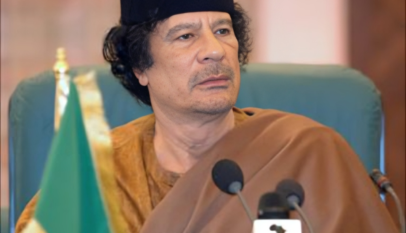Solving the Korean Problem
Once again, The Korean issue has become a source of concern, indeed a source of danger in world politics. It has always been a sensitive issue. Its sensitivity is the result of previous involvement dating back to the Second World War, or even before. Following the end of the Second World War, Germany was divided into East Germany, better known as the German Democratic Republic under soviet control, and the other one was West Germany or Federal Republic of Germany, under American influence. At the same time, Korea, too, was split into two states: North Korea under Soviet Union domination, South Korea under American influence.
I stated that the Korean issue is sensitive for the following reasons:
- The Korean Peninsula was coveted by its big neighbors. So, any dramatic flaring-up of the situation in it may rekindle the same ambitions. Korea fell under Chinese occupation in the First century B.C. In the 16th century it faced Japanese invasion. Again at the turn of the 20th century, it fell under Japanese occupation and mandate till the end of the Second World War. Furthermore, America and Europe were never far away from this arena.
- The neighbors of the Korean Peninsula are hostile to each other.
- Distant countries in America and Europe cannot ignore the actions of Korea’s neighbors.
- North Korea is still a communist country. This irritates capitalist countries.
- North Korea is an ally, to a certain extent, 0f the nuclear-armed Yellow Giant. Its positions must be taken fully into account in case of hot friction with North Korea.
- North Korea is a member of the nuclear club. At the very least, it is a producer not importer of ballistic missiles that can reach Japan and America.
- The army of North Korea is considered one of the biggest in Asia (one million ground forces) and 4.5 million in reserve.
- In light of the above, North Korea poses a threat to US allies such as South Korea and Japan. It also poses a threat to the American troops stationed in these two countries since the Second World War.
- Any threat to South Korea, from North of Korea or its allies, is a threat to the forty thousand American troops stationed there.
- Similarly, any threat Japan faces, is also a threat to the American armies there.
- The reunification of Germany and the fall of the Berlin Wall inflamed the feelings of the people of the two Koreas. Why should the two Germanys be able to reunite, while the two Koreas cannot? Why was the Berlin Wall torn down, while the American mine field between the two Koreas, the largest of its kind in the world, remains intact?
- The reunification of the two Koreas will have an impact on the reunification of the two Chinas (Taiwan and mainland China).
- Any attempt to reunite the two Koreas by force met with failure. When Kim Il Sung tried to reunite the two Koreas in the early 1950’s, under favorable internal circumstances, the following took place:
- The reunification process was met by external armed opposition from 19 countries led by U.S.A
- The UN Security Council adopted a resolution that opposed the attempt at forceful reunification.
- The US president Truman ordered his troops in Japan to prevent the reunification of Korea by force
- China participated extensively in the conflict.
- A limited (regional) world war erupted. Despite the alternating occupation of the two capitals, the unity could not be achieved by force. The result was the loss of one thousand planes, the destruction of railways, power plants, and factories and the injury of 4 million people.
Therefore, any attempt to reunite Korea by force, provocations or terror will not succeed. This is a fact. It is the lesson of history. Those who choose to ignore that are unwise.
An action that leads to a confrontation between armies of two million men, along with nearly nine million reservists, and the troops of nuclear states in the region allied to both parties, would be a dangerous and misguided adventure.
PEACEFUL REUNIFICATION:
There are firm unifying factors that can be summed up as follows:
- All Koreans, in the North and the South, are of the same Mongol Race.
- They share the same faith, Buddhism, Confucianism and local beliefs since the fourth century.
- They have the same cultural influences: Buddhist, Confucian and local faiths as well as Chinese and Japanese influences.
- Korea has been a unified country since the Seventh Century.
- There are other material unifying factors as follows:
* Population Growth in two Koreas is almost 1%.
* One administrative system (Division into provinces and cities).
* Life expectancy in the two Koreas is very similar.
* The urbanization rate is nearly identical between 60% and 80%.
* Both Koreas have free compulsory education for all children till the age of twelve.
- The industrial output of a united Korea will be 170 million tons of iron, steel and other materials. This would make it the ninth or tenth trading power.
- The work force of a united Korea would be 36 million strong.
- Integration and complementarily will be achieved in the energy sector. Currently, 40% of the energy in the S comes from nuclear sources, while 66% of the North’s energy is hydroelectric. The latter provides only 2% of the South’s energy. There is only one nuclear power planet in the North.
- This peacefully reunified country will have eight to ten major seaports. Each separate state has only four seaports.
- Reunified Korea would have 100 thousand kilometers of roads and railways and nearly 2000 km of River routes in the North.
- It would have nearly one thousand institutes of higher education.
- 40% of the budget, currently devoted to military spending due to the confrontation between the two parties, will be saved.
- North Korea under the rule of Kim Jong Il is more open and flexible.
All conferences for the reunification of the two Koreas, held under the auspices or tutelage of others, have failed. All wars of reunification, where others took part, have met the same fate. The leaders of the two Koreas did not meet for 55 years. When they finally met in 2000 they declared: “Both the North and the South have agreed to solve the question of reunification independently and through joint efforts of the Korean People; the sole master of its country”.
This is the correct approach. It takes into account the lessons of the past. This approach deserves to be encouraged by the international community and by all peace loving peoples in the world.
In all fairness, it must be stated that officials in South Korea are more tolerant with their brothers in the North. Proof of this is the visit by South Korea’s president to his counterpart in North Korea, and the disaster relief assistance provided by South Korea to the North.
Any attempt, by internal or external actors, to reunify the two Koreas by force, or the threat to use force and terror is doomed to failure and must be ruled out once and for all.
The Koreans ought to ponder the matter seriously. They should assess losses of separation, the price of war and of giving their enemies reason to gloat. They should compare those with the huge material and moral gains of reunification. Friends in the North should be more restrained and avoid some provocative behavior.
The two parts should be united so as to guarantee putting an end to the nuclear program in the North in return for the withdrawal of US troops from the South. When unity is achieved, the North will no longer need nuclear weapon. The South will have on further need of the US Army.
Africa’s Urgent Need of Stability
Africa has seen the end of the era of direct colonialism thanks to the Founding fathers of…













